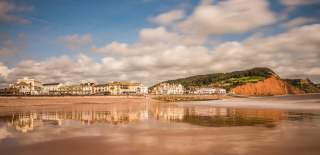The team working at Knapp Copse have been very busy. Funding enabled by the start of a new Higher Level Stewardship Programme which was awarded at the start of the year brought in a host of new projects and work has been going from strength the strength.
Here are updates on those projects.
New Ponds
In early March, two new ponds were dug by contractors on the western side of the valley. They were created on a ‘wet flush’, where natural runoff of rainwater flowed overground to the stream below.
Ponds are excellent for boosting biodiversity, so this was the main thrust behind the works. Aquatic life started to appear almost as soon as the works had been completed, and despite the short timeframe, a number of dragonfly and damselfly species were witnessed to breed and lay eggs over the summer. These included Broad bodied chasers, southern hawkers and large red damselflies. Other standard aquatic insects were also quick to take up residence, such as diving beetles, water boatmen, pond skaters and water fleas, amongst many others. Birds have also showed some interest in the new feature, notably a pair of water loving grey wagtails who showed up almost as soon as the diggers had left site!
It has been incredible to see the pace at which these new ponds have developed, and we look forward to seeing how they develop further over the coming years.
Extended boardwalk
Just further up from the ponds, the pre-existing boardwalk has been extended. The path leading up to it from above was frequently very muddy, so this extension really helps to keep people out of the worst of it!
Orchard Expansion
This winter, the team are planning to plant at least ten new fruit trees in the orchards in the valley bottom. These will be of local provenance, and hardy enough to put up with the wet conditions. The space was cleared for them last winter, with the resulting timber going towards the charcoal production programme. Creating and selling charcoal locally enables consumers to buy a sustainable and local product, as opposed to imported charcoal of dubious origins (eg, the product of illegal or unsustainable de-forestation).
Wildlife surveys
East Devon Council had some static bat detectors installed for a few days over the summer, but are still waiting for the results to come back. They intend to repeat the exercise next year too, to start building a picture of what we regularly have on site, and how bats are doing generally in the locality. The addition of ponds can be very positive for bats, so it will be interesting to see if our new ones are attracting much attention.
They also had a fairly in-depth botanical survey undertaken throughout the site. A large number of species have (unsurprisingly) been recorded, with much variation occurring throughout owing to differences in aspect, soil type, drainage, grazing, etc. Amongst the most notable species are Corky Fruited Dropwort and Dwarf Thistle, both of which are fairly scarce in East Devon. The surveyor also noted Heath Spotted orchids on a separate visit, which takes our presently known total of orchid species on-site up to 6!
In other animal groups, the discovery of a grass snake in the mire over summer confirms that there are 4 out of 6 of our native reptiles all on-site at Knapp Copse, with the others being adders, slow worms and common lizards. It is highly unlikely that sand lizards or smooth snakes will ever grace the site, so they can consider that they have as many species as they could hope for! Now they must work to keep them there, and hopefully boost their numbers through targeted works…
Wildflower meadow creation
This has been one of the biggest and most exciting projects. Just in the last couple of weeks the field has been harrowed (just above the orchards on the eastern side) almost 2 hectares in size, and oversown it with a wildflower seed mix (of local provenance, supplied by Goren Farm – wildflower seed growers and specialists, located between Honiton and Axminster). This field will henceforth be managed as a wildflower meadow, with a traditional hay cut being taken from it each year in late summer. They should start to see the results from next Spring, but it will really take several years before it has fully developed with the type of diversity they would like to see. With the biodiversity crisis worsening year on year, projects such as this are all the more important to create safe-havens and boost population numbers, of insect life especially. Watch this space!
New track for the EDW!
This wasn’t part of the HLS programme, but in February, the entire track through the valley bottom, which is a section of the East Devon Way, was re-laid. As it is a public footpath and bridleway, these works were paid for by Devon County Council (who own the site). The new surface has bedded in really well, and has greatly improved visitor experience – not least because a series of French drains has really helped to dry out some very boggy sections!
Find out more about works taking place in East Devon here.

